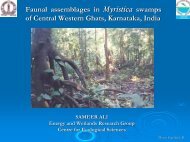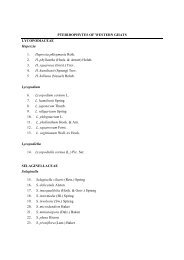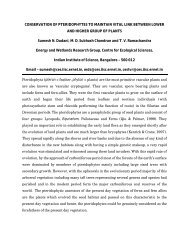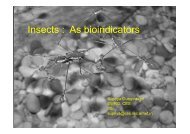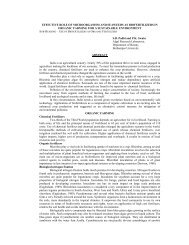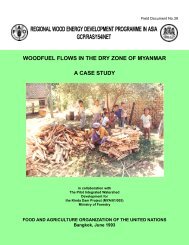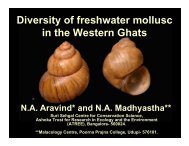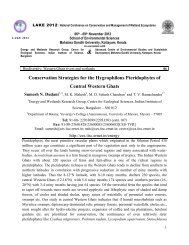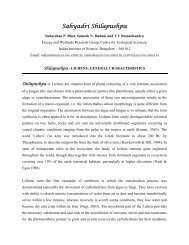Flowerless plants; ferns, mushrooms, mosses, lichens, and seaweeds
Flowerless plants; ferns, mushrooms, mosses, lichens, and seaweeds
Flowerless plants; ferns, mushrooms, mosses, lichens, and seaweeds
Create successful ePaper yourself
Turn your PDF publications into a flip-book with our unique Google optimized e-Paper software.
MUSHROOMS<br />
us large <strong>and</strong> strong. They have no leaf green, so they<br />
must feed on material which has been made by green<br />
<strong>plants</strong>.<br />
People who have studied fungi have placed them in<br />
three classes. The first is a cobwebby plant, <strong>and</strong> in-<br />
cludes the bread mold, the potato rot, <strong>and</strong> the fungus<br />
which grows on fishes <strong>and</strong> makes them<br />
die. First we see fine white threads<br />
The Bread Mold. 1, Fine<br />
Threads that form the<br />
Plant; 2, Spore Cases.<br />
Spores in Sacs.<br />
Spores on Little Stalks<br />
St<strong>and</strong>ing in Large<br />
Cells. 1, Spore<br />
Cases; 2, Stalks on<br />
which Spore Cases<br />
Grow; 3, Cell out<br />
of which the Stalks<br />
Grow.<br />
which form the plant. Later there are spore cases<br />
holding tiny black spores. As their number increases,<br />
they form a disagreeable black mass which destroys<br />
the life of that upon which it lives.<br />
The second class form spores in delicate sacs.<br />
Among these is the yeast plant by which our bread is<br />
raised. The fungus which makes the peach leaves curl,<br />
64



